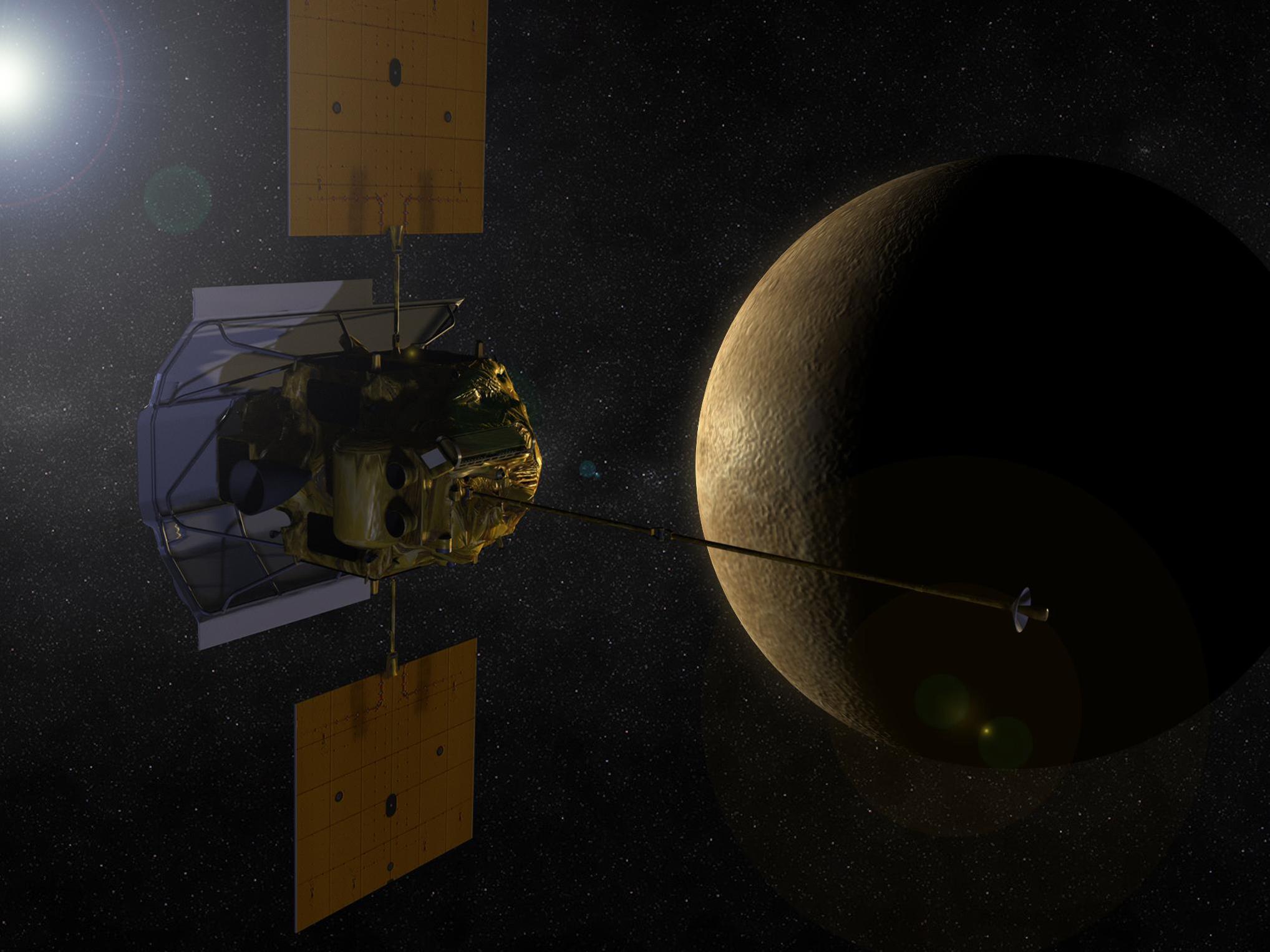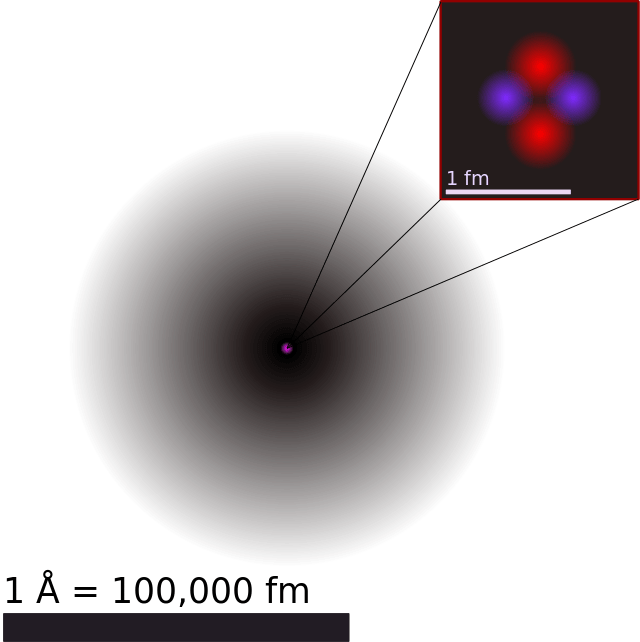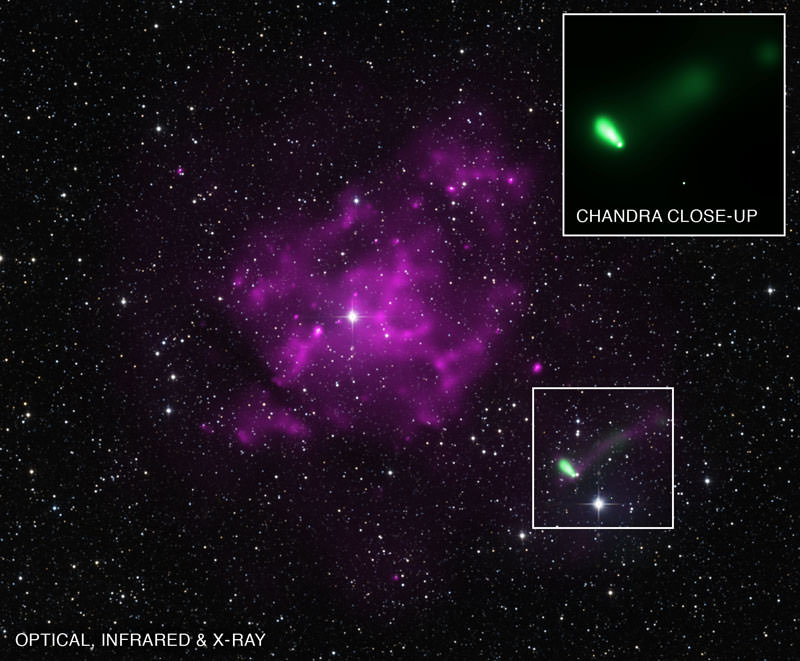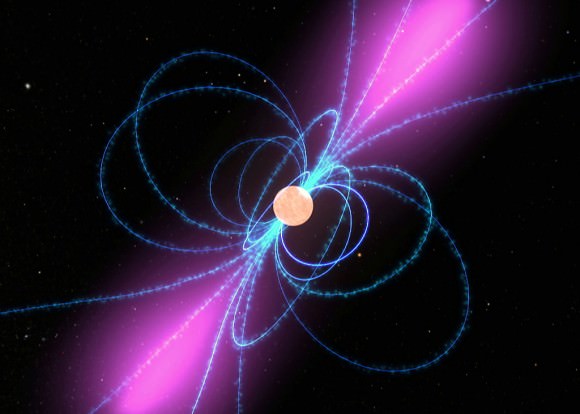Using NASA’s MESSENGER spacecraft’s close encounters with Venus and Mercury, researchers were able to measure the lifetime of neutrons, an important prediction of the Standard Model of particle physics.
Continue reading “Spacecraft was able to measure how long neutrons last before they decay”What Are The Parts Of An Atom?
Since the beginning of time, human beings have sought to understand what the universe and everything within it is made up of. And while ancient magi and philosophers conceived of a world composed of four or five elements – earth, air, water, fire (and metal, or consciousness) – by classical antiquity, philosophers began to theorize that all matter was actually made up of tiny, invisible, and indivisible atoms.
Since that time, scientists have engaged in a process of ongoing discovery with the atom, hoping to discover its true nature and makeup. By the 20th century, our understanding became refined to the point that we were able to construct an accurate model of it. And within the past decade, our understanding has advanced even further, to the point that we have come to confirm the existence of almost all of its theorized parts.
What’s the Big Deal About the Pentaquark?
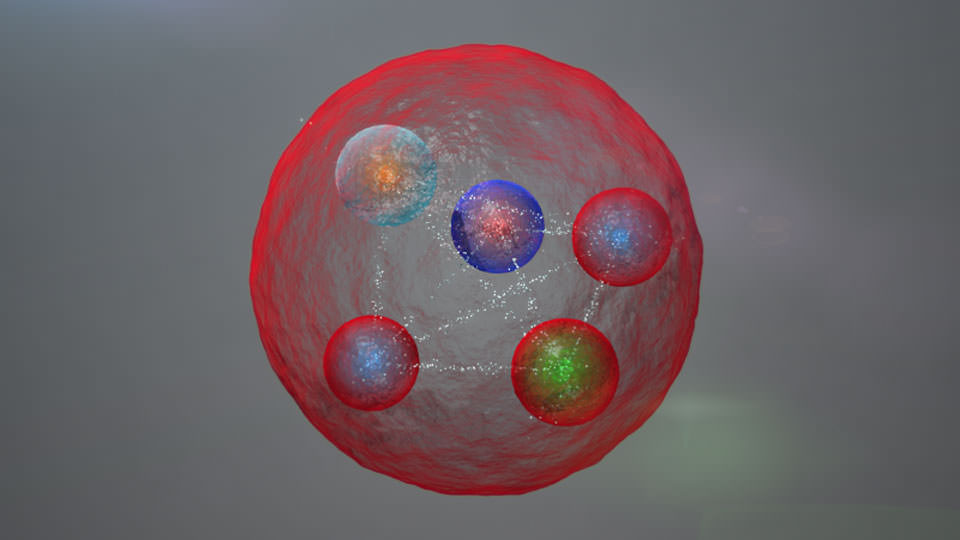
“Three quarks for Muster Mark!,” wrote James Joyce in his labyrinthine fable, Finnegan’s Wake. By now, you may have heard this quote – the short, nonsensical sentence that eventually gave the name “quark” to the Universe’s (as-yet-unsurpassed) most fundamental building blocks. Today’s physicists believe that they understand the basics of how quarks combine; three join up to form baryons (everyday particles like the proton and neutron), while two – a quark and an antiquark – stick together to form more exotic, less stable varieties called mesons. Rare four-quark partnerships are called tetraquarks. And five quarks bound in a delicate dance? Naturally, that would be a pentaquark. And the pentaquark, until recently a mere figment of physics lore, has now been detected at the LHC!
So what’s the big deal? Far from just being a fun word to say five-times-fast, the pentaquark may unlock vital new information about the strong nuclear force. These revelations could ultimately change the way we think about our superbly dense friend, the neutron star – and, indeed, the nature of familiar matter itself.
Physicists know of six types of quarks, which are ordered by weight. The lightest of the six are the up and down quarks, which make up the most familiar everyday baryons (two ups and a down in the proton, and two downs and an up in the neutron). The next heaviest are the charm and strange quarks, followed by the top and bottom quarks. And why stop there? In addition, each of the six quarks has a corresponding anti-particle, or antiquark.

An important attribute of both quarks and their anti-particle counterparts is something called “color.” Of course, quarks do not have color in the same way that you might call an apple “red” or the ocean “blue”; rather, this property is a metaphorical way of communicating one of the essential laws of subatomic physics – that quark-containing particles (called hadrons) always carry a neutral color charge.
For instance, the three components of a proton must include one red quark, one green quark, and one blue quark. These three “colors” add up to a neutral particle in the same way that red, green, and blue light combine to create a white glow. Similar laws are in place for the quark and antiquark that make up a meson: their respective colors must be exactly opposite. A red quark will only combine with an anti-red (or cyan) antiquark, and so on.
The pentaquark, too, must have a neutral color charge. Imagine a proton and a meson (specifically, a type called a J/psi meson) bound together – a red, a blue, and a green quark in one corner, and a color-neutral quark-antiquark pair in the other – for a grand total of four quarks and one antiquark, all colors of which neatly cancel each other out.
Physicists are not sure whether the pentaquark is created by this type of segregated arrangement or whether all five quarks are bound together directly; either way, like all hadrons, the pentaquark is kept in check by that titan of fundamental dynamics, the strong nuclear force.
The strong nuclear force, as its name implies, is the unspeakably robust force that glues together the components of every atomic nucleus: protons and neutrons and, more crucially, their own constituent quarks. The strong force is so tenacious that “free quarks” have never been observed; they are all confined far too tightly within their parent baryons.
But there is one place in the Universe where quarks may exist in and of themselves, in a kind of meta-nuclear state: in an extraordinarily dense type of neutron star. In a typical neutron star, the gravitational pressure is so tremendous that protons and electrons cease to be. Their energies and charges melt together, leaving nothing but a snug mass of neutrons.
Physicists have conjectured that, at extreme densities, in the most compact of stars, adjacent neutrons within the core may even themselves disintegrate into a jumble of constituent parts.
The neutron star… would become a quark star.
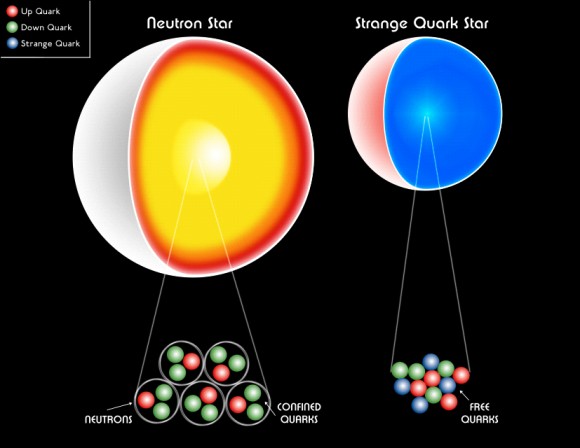
Scientists believe that understanding the physics of the pentaquark may shed light on the way the strong nuclear force operates under such extreme conditions – not only in such overly dense neutron stars, but perhaps even in the first fractions of a second following the Big Bang. Further analysis should also help physicists refine their understanding of the ways that quarks can and cannot combine.
The data that gave rise to this discovery – a whopping 9-sigma result! – came out of the LHC’s first run (2010-2013). With the supercollider now operating at double its original energy capacity, physicists should have no problem unraveling the mysteries of the pentaquark even further.
A preprint of the pentaquark discovery, which has been submitted to the journal Physical Review Letters, can be found here.
Pulsar Sets New Speed Record
A pulsar may have been spotted racing through space at over 6 million miles per hour (9.65 million km/h), setting a new speed record for these curious cosmic objects. If observations are what they appear to be, astronomers will have to recalculate the incredible forces created by supernova explosions.
Seen in observations made with 3 different telescopes — NASA’s Chandra X-ray Observatory, ESA’s XMM-Newton, and the Parkes radio telescope in Australia — the x-ray-emitting object IGR J11014-6103 appears to be racing away from the remnants of a supernova in the constellation Carina, 30,000 light-years from Earth.
The comet-shaped object is thought to be a pulsar, the rapidly-spinning, superdense remains of a star. The facts that it’s dim in optical and infrared wavelengths and hasn’t changed in x-ray brightness between XMM-Newton observations in 2003 and Chandra measurements in 2011 support the claim.
IGR J11014’s comet-like shape may be the result of its breakneck speed through space as its pulsar wind nebula gets blown back by the high-energy bow shock created at the forefront of its passage.
Pulsar wind nebulae are the results of charged particles streaming out from the pulsar itself. The particles, traveling at nearly light-speed, are rapidly decelerated by the interstellar medium and create a visible shock wave. In the case of IGR J11014, the pulsar wind is formed into a “tail” by its bow shock — effectively a sonic boom in front of it.
Further observations will be needed to confirm that IGR J11014 is indeed a pulsar, especially considering that actual pulsations have not yet been detected. If it is a pulsar, and is really traveling at the record-breaking speeds it appears to be — between 5.4 and 6.5 million miles per hour, more than 12 times faster than the Sun travels around the center of the galaxy — a new model of supernova explosions may be required.
Read more on the Chandra news release here.
Image: X-ray: NASA/CXC/UC Berkeley/J.Tomsick et al & ESA/XMM-Newton, Optical: DSS; IR: 2MASS/UMass/IPAC-Caltech/NASA/NSF. Video: NASA/CXC/A. Hobart.
Super Star Smashes into the Record Books.
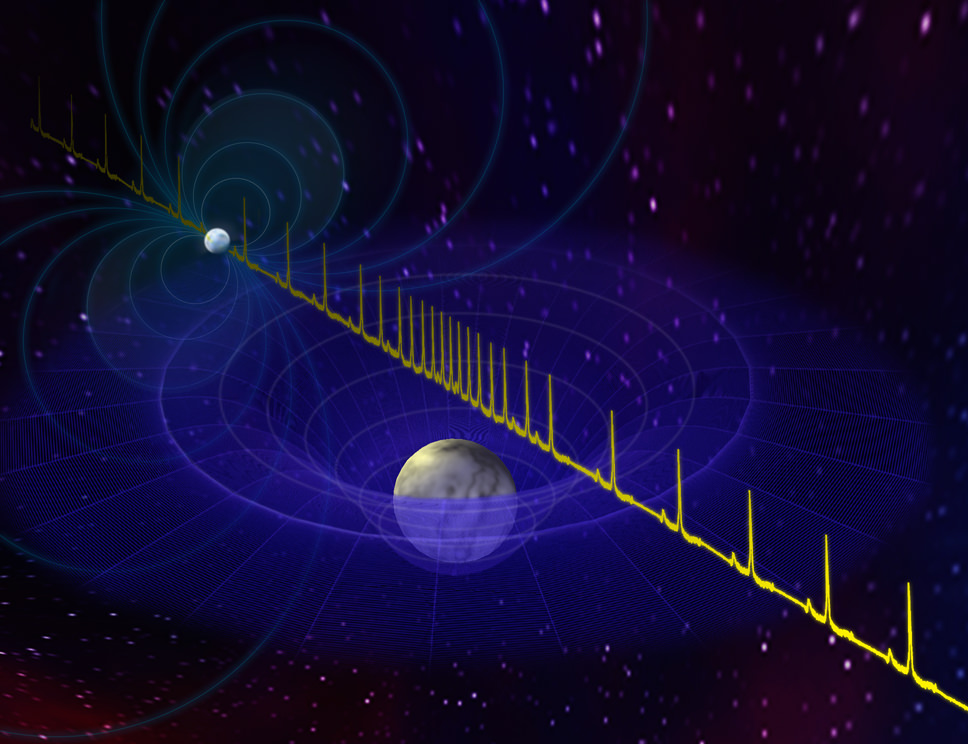
[/caption]
The discovery of a super massive neutron star has thrown our understanding of stellar evolution into turmoil. The new star, called PSR J1614-2230 contains twice the mass of the Sun but compressed down into a star that is smaller than the Earth (you could fit over a million Earth’s inside the Sun by comparison). It is estimated a thimbleful of material from the star could weigh more than 500 million tons — that equates to about a million airliners. The study has cast serious doubt over how matter reacts under extreme densities.
The study by a team of astronomers using the National Radio Astronomy Observatory in New Mexico focussed its attention on the star which is about 3,000 light years away (the distance light can travel in 3,000 years at a speed of 300,000 km per second). The stellar corpse whose life ended long ago is now rotating at an incredible speed, completing 317 rotations every second. Its emitting an intense beam of energy from its polar regions which just happens to point in the direction of us here on Earth. We can detect this radiation beam as it flashes on and off like a celestial lighthouse. This type of neutron star is classed a pulsar.
Rather fortuitously, the star is part of a binary star system and is orbited by a white dwarf star which completes one orbit in just nine days. Its through the measurements of the interaction of the two which gave astronomers the clue as to the pulsar’s mass. The orbit of the white dwarf takes it between the beam of radiation and us here on Earth so that the energy from the beam has to pass close by the companion star. By measuring the delay in the beam’s arrival caused by distortion of space-time in the proximity of the white dwarf, scientists can determine the mass of both objects. Its an effect called the Shapiro Delay and its simply luck that the orientation of the stars to the Earth allows the effect to be measured.
Dave Finley, Public Information Officer from NRAO told Universe Today ‘Pulsars are neutron stars, whose radiation beams emerge from the poles and sweep across the Earth. The orientation of the poles (and thus of the beams) is a matter of chance. We just got very lucky with this system.’
The discovery which was made possible by the new ‘Green Bank Ultimate Pulsar Processing Instrument (GUPPI) was able to measure the pulses from the pulsar with incredible accuracy and thus come to the conclusion that the star weighed in at a hefty two times the mass of the Sun. Current theories suggested a mass of around one and a half solar masses were possible but this new discovery changes the understanding of the composition of such stars, even to the subatomic level.
Neutron stars or pulsars are extreme objects at the very edges of the conditions that matter can exist. They really test our knowledge of the physical Universe and slowly but surely, through dedicated work of teams of astronomers, we are not only learning more about the stars above our heads but more and more about matter in the Universe in which we live.
Mark Thompson is a writer and the astronomy presenter on the BBC One Show. See his website, The People’s Astronomer, and you can follow him on Twitter, @PeoplesAstro
Source: NRAO

